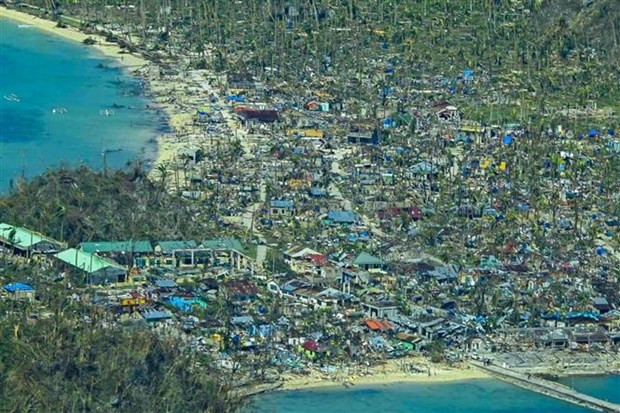 Rescue activities in areas affected by typhoon Rai in the Philippines are facing difficulties due to transport disruption and the running out of necessities. (Photo: Xinhua/VNA)
Rescue activities in areas affected by typhoon Rai in the Philippines are facing difficulties due to transport disruption and the running out of necessities. (Photo: Xinhua/VNA)Rai, the strongest typhoon to hit the archipelago this year, has killed at least 375 people and affected 1.8 million others, 630,000 of them had to be displaced, according to the UN Office for the Coordination of Humanitarian Affairs.
Fely Pedrablanca, mayor of Tubajon town on Dinagat Island said on December 21 that food supply in the area will run out in few days, while only nine out of more than 2,000 homes in her town were left standing.
Meanwhile in Southern Leyte province, Roger Mercado, acting chief of the public works agency, has appealed for tents and construction materials.
Damage to infrastructure in Southern Leyte may reach 60.14 million USD, he said.
The government has prepositioned food and necessities but they are not enough because many are in need, said Danilo Atienza, Southern Leyte's disaster chief.
Earlier on December 20, President Rodrigo Duterte ordered state agencies to restore power and communications as he promised 200 million USD for recovery efforts.
Super typhoon Rai landed in the Philippines later than the normal stormy season in the country that lasts from July to October.
The Philippines is one of the most vulnerable countries to climate change. Each year, the country is affected by about 20 storms which cause heavy losses in economy, infrastructure and human lives. In 2013, typhoon Haiyan left over 6.300 people dead and missing in the Southeast Asian country./.


























